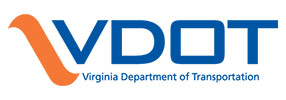ORM REGULATORY MODERNIZATION HIGHLIGHTS

One of the major factors of Virginia’s success in its regulatory modernization effort has been its flexibility. Agencies can achieve regulatory reductions by cutting unnecessary requirements. They also can achieve reductions by making overly burdensome requirements less stringent. This week’s Highlights feature one example of each approach.
 The Department of Transportation eliminates over 12,000 requirements by cutting unnecessary incorporated documents.
The Department of Transportation eliminates over 12,000 requirements by cutting unnecessary incorporated documents.
Past Highlights have discussed the common practice of “incorporation by reference”: agencies often direct regulated parties to comply with separately developed standards rather than laying out requirements in regulatory text. Oftentimes, the incorporated documents are far more detailed than necessary, including hundreds or even thousands of unnecessary requirements.
The Virginia Department of Transportation (VDOT) recently modified and is finalizing its land use permit regulations by eliminating incorporated documents containing well over 12,000 discrete requirements (see Action 6274). Instead, VDOT will write individual permits, which are akin to contracts or agreements, to include only those requirements applicable to each regulated party. This will save regulated parties from poring through literally hundreds of pages to determine their obligations. And it should improve compliance by giving permittees clearer instructions.
 The Board for Barbers and Cosmetology cuts training hours for barbers.
The Board for Barbers and Cosmetology cuts training hours for barbers.
Everyone always feels a little more confident after a good haircut. Unfortunately, as the price of everyday services has skyrocketed in the last several years, this simple pleasure has become less affordable.
The Board for Barbers and Cosmetology recently decided that it could reduce the clock hours required to become a barber, promoting faster entry into the profession (see Action 6339). It lowered the minimum qualifying hours from 1100 to 750 and also reduced the additional hours required to become a master barber (400 -> 250).
This should expand the supply of barbers while still ensuring that newly minted professionals possess the necessary skills. It should also help control the cost of a haircut and allow more young men and women to qualify for a solid middle-class job while providing a valuable service to society.